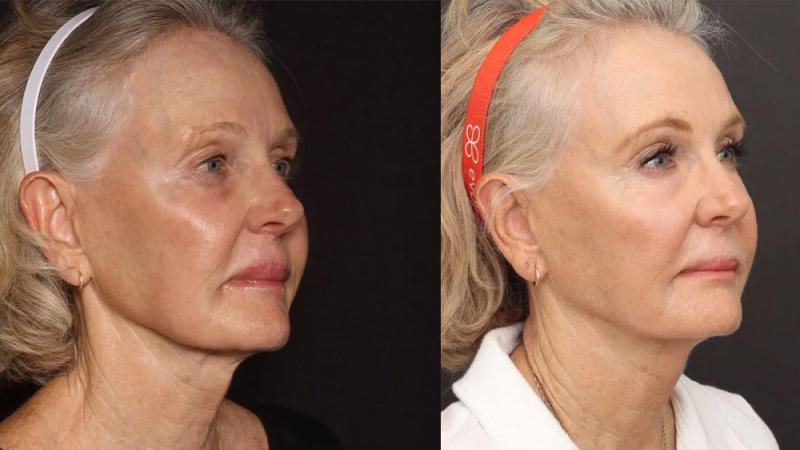In Manhattan, where cosmetic procedures are as commonplace as dentist appointments, the Sofwave collagen-stimulating treatment has been a favorite among clientele wanting to replace or augment their Botox. Now the technology is gaining a new fanbase: users of Ozempic and other weight-loss medications.
Sofwave was FDA-approved five years ago as a non-invasive way to lift and smooth skin. It’s gaining new attention as a means to combat so-called “Ozempic face,” the sagging of facial skin that’s a common byproduct of rapid weight loss.
“It’s the old adage — as you age, it’s either your butt or your face!” jokes Dr. Amy Lewis, whose NYC dermatology practice has administered Sofwave to a steadily growing number of patients since 2021.
“We are in the Ozempic craze right now,” she says. “We definitely are seeing patients who are requesting methods for lifting and tightening after weight loss with these medications.”

The term “Ozempic face” started trending at the end of 2023 to describe the cosmetic effects of sudden weight loss to the face and jowls. The nickname comes from Ozempic, or semaglutide, the diabetes medication that skyrocketed to mainstream fame as a weight-loss drug along with counterparts Wegovy and Rybelsus.
“‘Ozempic face’ is becoming more and more common,” says New York City dermatologist Dr. Doris Day. “One major concern is, what will happen when people discontinue using a semaglutide and then regain weight?
“Rapid weight loss and yo-yo dieting can affect skin elasticity and aging,” she says. “Sofwave can address some of the issues around rapid volume loss.”
Targeted Heat That Prompts Healing
Sofwave uses ultrasound to bypass the skin’s outer epidural layer and deliver heatwaves to the dermis, 1.5 mm below the surface. The heat causes micro-damage that triggers the body’s healing response: replenishing collagen, elastin, and hyaluronic acid within that layer.
The result is lifted skin texture plus diminished lines and wrinkles. “Hyaluronic acid itself binds so much more water to its weight,” Dr. Lewis says, “and it gives you that youthful fullness, so your skin just overall looks younger.”
Sofwave has received FDA approval for cellulite removal, acne scar treatment, and arm laxity as well, with trials currently ongoing to test its efficacy on other parts of the body.

The procedure takes from 30-60 minutes, in which a topical numbing cream and then ultrasound gel is applied to the treatment area.
The practitioner makes a couple passes over the skin with a handheld device, pulsing the ultrasound for about six seconds on targeted spots. In many areas there is no sensation; in more sensitive spots, a brief burning feeling that ranges from mild to moderate.
There is usually no down time or visible swelling or bruising, and patients can exercise, apply makeup, and generally go on with their normal day afterward.
Most patients see the difference within 3-6 months, with optimal results coming in around 6-8 months later. One or two initial Sofwave treatments are recommended, then one maintenance appointment per year.
Treatment costs vary by location and target areas, with most clocking in from $2,500-$4,500 per session.
Weight-loss patients are one of two fast-growing demographics of Sofwave clients that Dr. Lewis is seeing in her NYC practice. The other, she says, are clients in their 20s-30s who use the technology as an anti-aging preventative.
“We know that after age 25, our collagen starts to decrease,” Dr. Lewis says.
“Besides the people who want to look younger, what we’re seeing very often is someone in their 30s who know they’ve already lost some collagen but haven’t seen the effects yet. We call it ‘pre-juvenation,’ where you start the rejuvenating process before you see it.”